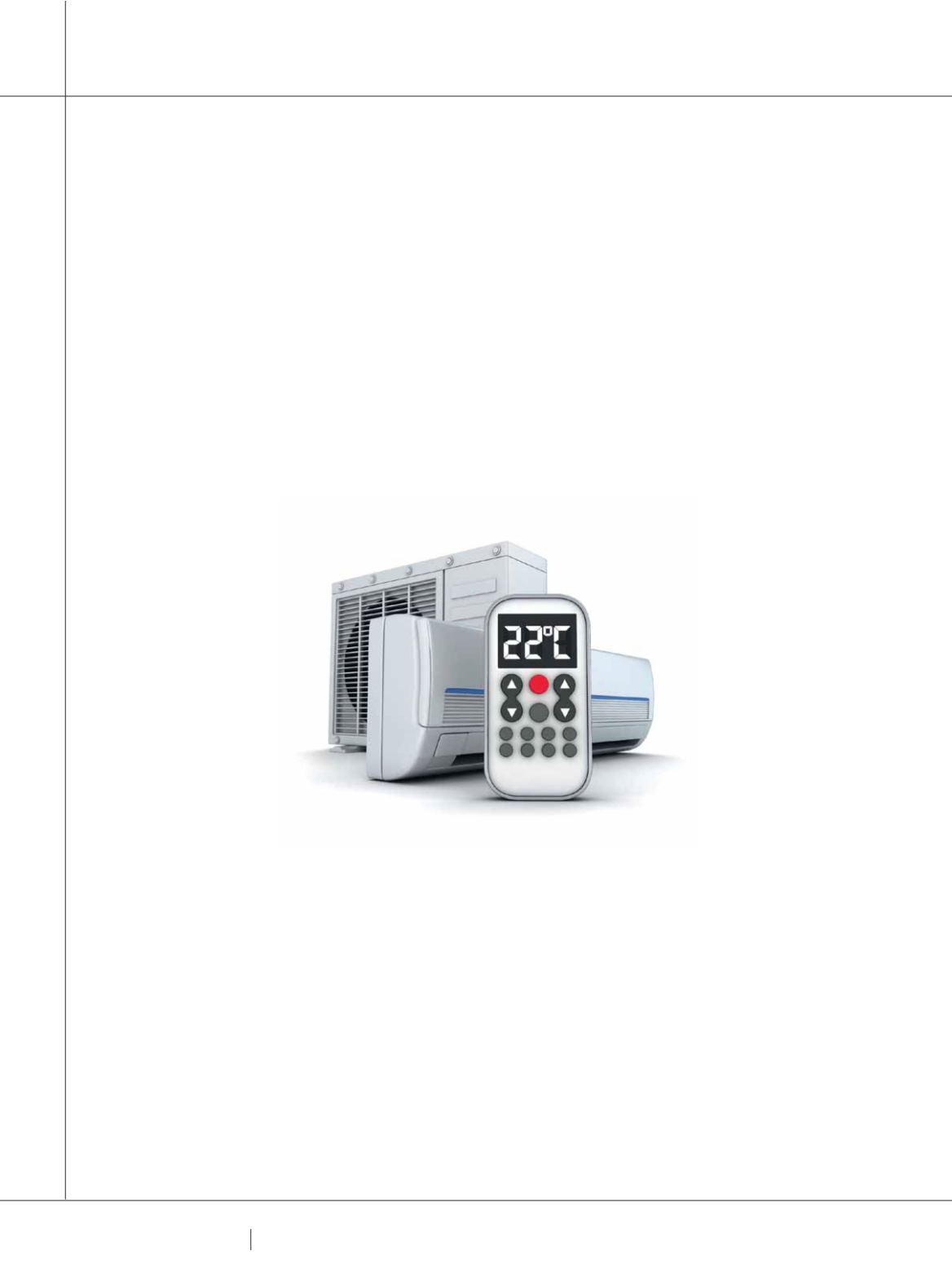

9 6
PLUMBING CONNECTION
SPRING 2015
WHAT’S COOL IN AIR CONDITIONING
WITH THE WEATHER ABOUT TO HEAT UP,
PLUMBING CONNECTION
TAKES A LOOK AT DEVELOPMENTS AND NEWS IN
THE AIR CONDITIONING MARKET.
AIR CON NEWS
T
he humble air conditioner is the hero of many
Australian homes in summer. Manufacturers are
constantly updating their offerings to provide
Australians the ultimate in climate control – and keep a
strong position in the market.
Current trends in residential and small commercial
air conditioning can be summed up as: energy and cost
efficiency; remote control for the smart home; smaller,
quieter units for increased housing density; and cleaner air.
ENERGY AND COST EFFICIENCY
The biggest trend in air conditioning – it always has
been and always will be – is energy and
cost efficiency. A recent white
paper showed that 78.9% of
Australian air conditioner owners
thought saving money on their
electricity bills was ‘Important’ or
‘Very Important’.
‘Energy efficiency continues
to be one of the most important
considerations for consumers
looking to purchase an
air conditioning product,’
states Joe De Bella, Product
Marketing Manager for Air
Conditioning at Panasonic. ‘We do
not foresee this trend changing in the future.’
Panasonic’s latest release in the air conditioning market
– the ECONAVI Reverse Cycle series – gives consumers
the ability to reduce their energy consumption without a
concerted effort. The entire range uses R32 refrigerant,
which is 1.5 times more effective than R410A refrigerant,
and offers up to 8.0kW cooling and 9.0kW heating.
Manufacturers aren’t just ensuring their units work
better – they’re making them work smarter. Mitsubishi’s
MSZ-FH series includes the new 3D i-see Sensor that scans
the entire room and delivers cooling when and where it’s
needed – even powering down if no one is in the room.
The Panasonic ECONAVI series measures human activity,
sunlight and temperature sensors to intelligently adapt the
heating and cooling power according to room conditions.
REMOTE CONTROL / SMART HOMES
One aspect of energy efficiency is home automation.
Through smart controls via a central hub or smart device
application, home owners can control their cooling remotely
or automatically, only using the cooling when it’s needed.
Both Toshiba and Mitsubishi are currently promoting
the IntesisHome system, which is also compatible with
many other major air conditioning brands available on the
Australian market. InstesisHome is a way of controlling
home or small business air conditioning wirelessly. An app
on the client’s phone connects to the universal controller
or the air conditioning unit itself, allowing access from
anywhere. The client can also program in automatic start
or finish times – ensuring the home is cool when they get
home or their shop a comfortable temperature when
they’re ready to open.
SMALLER, QUIETER UNITS FOR INCREASED
HOUSING DENSITY
In many of Australia’s larger cities,
urban density is increasing,
with more apartments and
townhouses being built. To
maintain the liveability of
these new, smaller homes, air
conditioning units must be
smaller and quieter.
Fujitsu and Mitsubishi are
both addressing this problem.
The Fujitsu Airstage J-IIS series has
a 25% reduction in height compared
to previous J-II models, standing just 370mm tall. The SRK-
ZMP from Mitsubishi is even smaller, with dimensions of
540x645x275mm.
With people living at closer quarters, noise must also be
considered. The J-IIS series has reduced the noise rating by
up to -3dB (when the low noise function is in use) through an
updated outdoor fan design.
CLEANER, FRESHER AIR
Many of the manufacturers are also addressing people’s
concerns around the growth and spread of mould, bacteria
and viruses. Panasonic’s nanoe-G feature eliminates 99%
of airborne bacteria, viruses and mould, as well as those
on the surfaces and in the filter. The Daiseikai Plasma Air
Purifier uses an ionised circuit to force pollutants to adopt
a positive electrical charge. These are then attracted to
negative electrons in the collection board and removed from
the air.
















